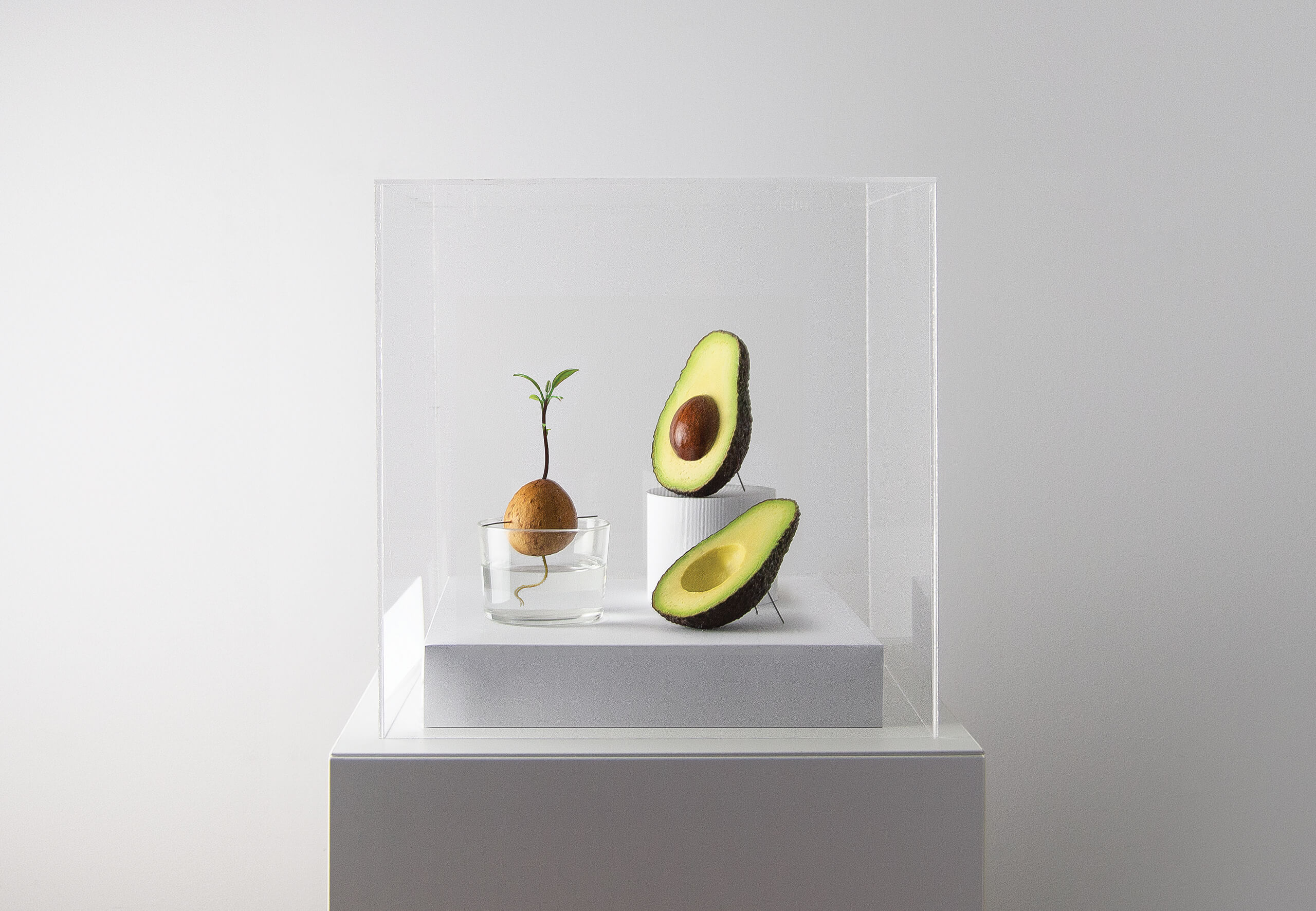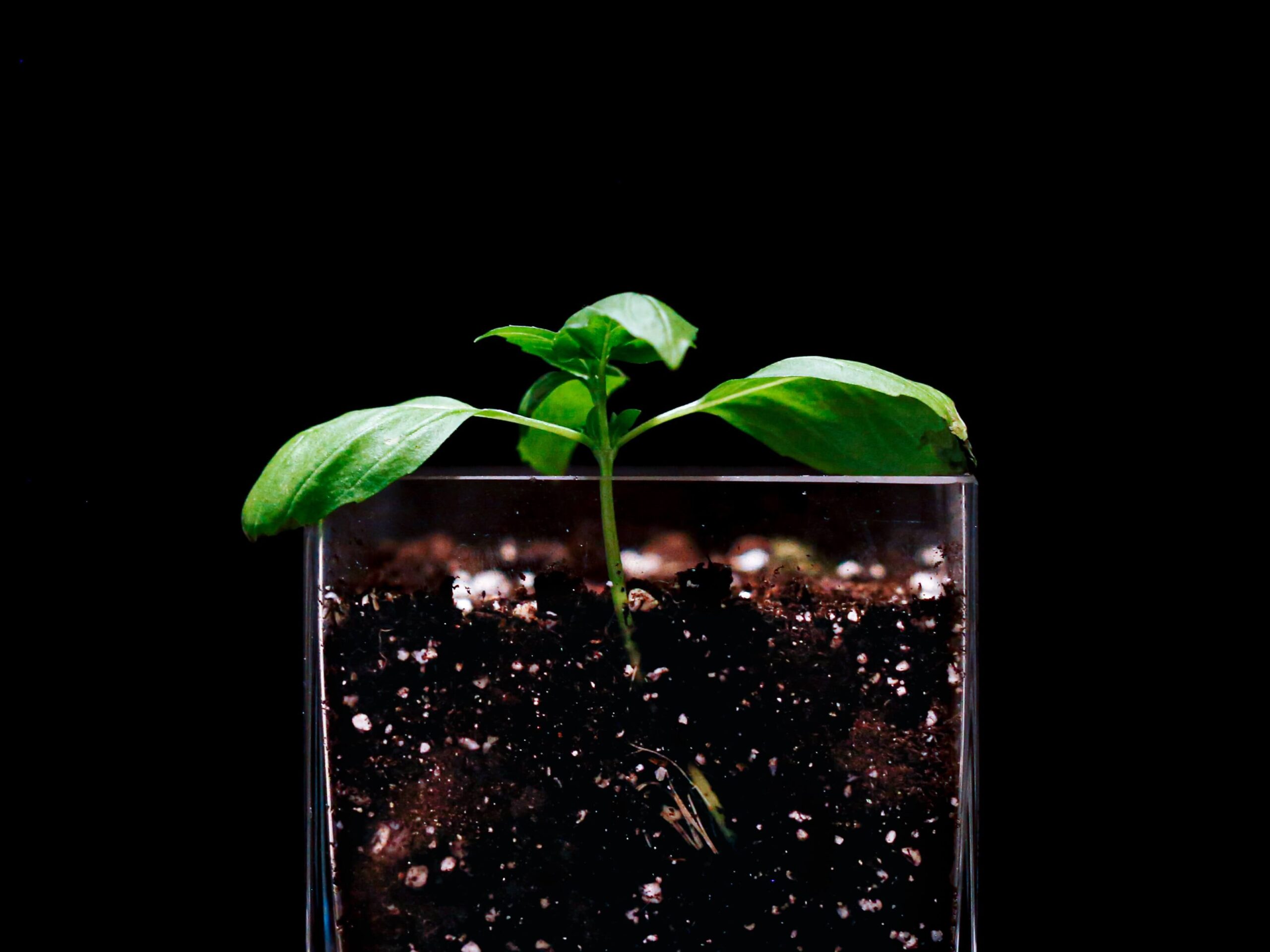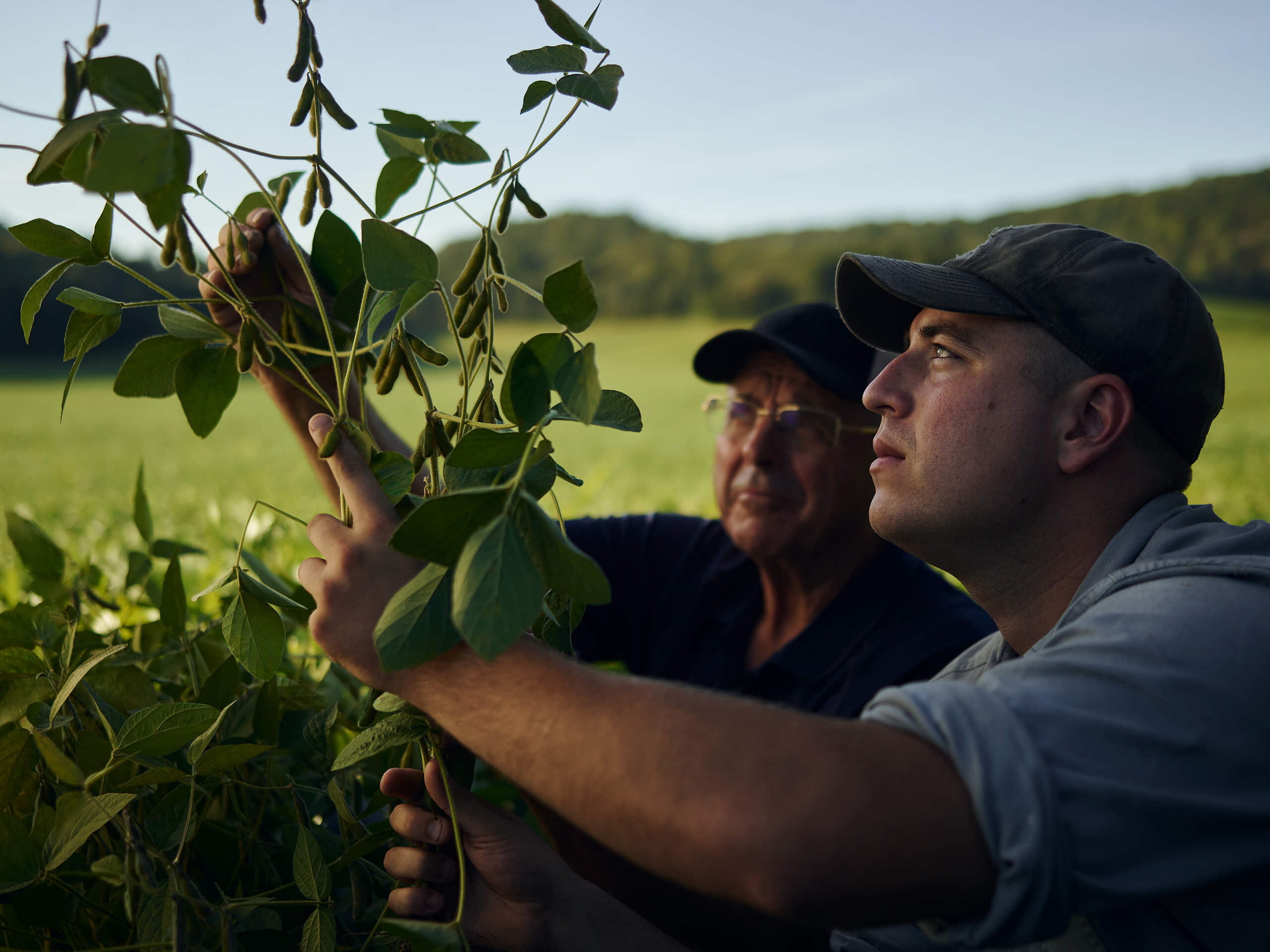
Enhanced seeds and beans meet specific market – not just farmer – needs, and benefit the planet in the process.
Later this decade, acres of prime soybean land will be turned over to a new kind of bean. That’s not too surprising; agriscience companies are always hunting for new varieties with the traits farmers demand – things that will help increase yield, reduce the twin burdens of pests and diseases, or lower input costs (see Journey of a Seed).
The story of those five million acres is a little different, though. They won’t be planted with just a heartier, better-yielding soybean, they’ll be planted with one tailor-made to increase the sustainability of the poultry industry.
The new bean is one part of a collaboration between Corteva Agriscience and Bunge, a leading grain merchant. The other part of that collaboration is an oilseed project designed to produce sustainable fuel. Together, the companies are devising solutions that provide sustainable products to the end users of the harvest. Along the way, Corteva and Bunge are creating market innovations that make sure farmers participate in the additional value that comes with growing these in-demand crops.
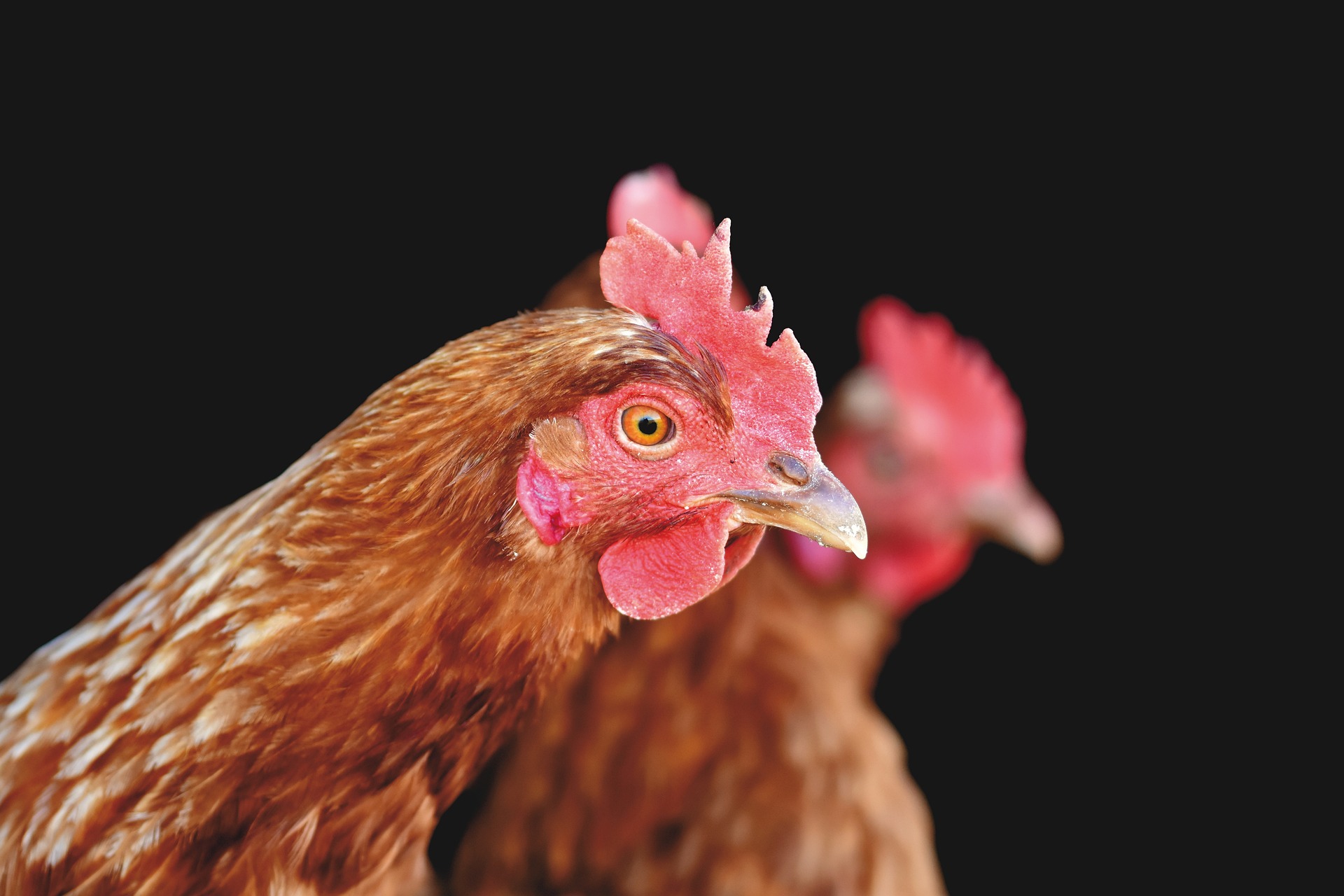
Corteva aims to improve the amino acid profile of soybeans specifically for poultry rations.
Source: Photo by Ralph of PixabayRedefining the value chain
Successful companies respond to market demand, but with these new beans, Corteva and Bunge are responding to the needs of poultry producers – the end users of the soybeans. Their priorities are different from those of farmers. Poultry, to grow optimally, need to be fed with a specific blend of amino acids, with methionine being the most important of them. That causes a problem.
As Knut Meyer, program leader for Corteva, says, “when soybean is included at economically feasible rates, certain amino acids are still missing.” That leaves producers with few choices other than using “non-sustainably produced amino acids, synthesized using fossil fuels.”
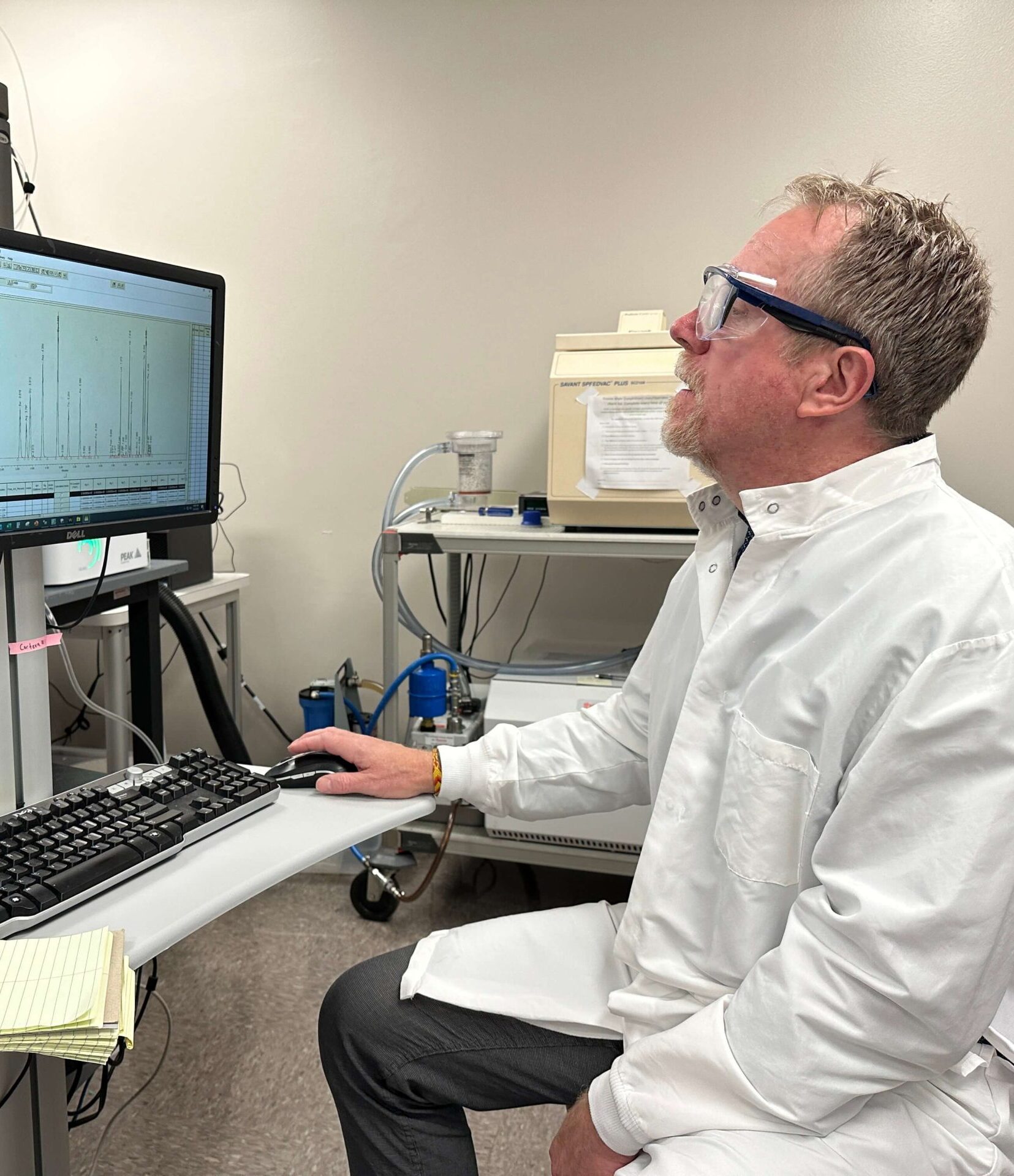
Knut Meyer, Discovery Assessment Team Leader for Corteva Agriscience
Since poultry producers are looking for sustainable, economical, and optimal growth, they would love a soybean that packs a greater amino acid punch. Meyer is excited to deliver the innovation that poultry producers are looking for, but he recognizes the market challenges.
In the two decades he has spent working to make seeds more valuable to end users, not just farmers, he has seen that farmers don’t necessarily care about the properties of the bean itself: “Performance to the farmer is really based on how much yield they harvest per acre,” he says.
After all, in the current model, the economic benefit of a specialized bean gets captured further down the chain, leaving the farmer out of the upside.
Through this new partnership, Meyer says, “We have a system where we create value through discovery, and we make sure that this value is shared across the value chain. That’s something unique.”
The new soybean Corteva is developing for the Bunge partnership connects Corteva’s germline innovation directly with the needs of poultry producers, supplying them with a feed source that provides the right balance of amino acids. That eliminates greenhouse gas emissions that come from fossil fuel-based supplementation.
“It’s an interplay between what we can do scientifically and what they tell us the market needs,” Meyer notes. “We’re completely integrated, essentially all the way up from the first discovery experiments to the end user.”
The Corteva-Bunge partnership benefits farmers of another crop, too – one that they can add to their rotation without displacing a crop or acquiring new land. Regulatory and market pressures are increasing the demand for oilseeds that can be processed into fuel, creating new opportunities for farmers.
Revolutionizing crop rotations
In the southeastern United States, “the grower traditionally does two rotations in a season [in certain regions] with something like cover crop or fallow land in between, particularly in the winter,” says Fernando Candia, Vice-President of Carbon Solutions for Bunge. In that scenario, the land isn’t producing anything for the farmer in the winter, but with a new program that links Corteva, farmers, and Bunge – plus an additional participant, Chevron – those acres can earn money for farmers even as they lower carbon emissions.

Fernando Candia, Vice-President of Carbon Solutions for Bunge
The program relies on using a winter canola variety from Europe as a cover crop or intercrop in the southeastern United States, making the same land produce more fuel feedstock than it could have before, and increasing efficiency for the farmer and the market. Introducing winter canola requires planning – for investment return, relative yields, agronomy, labor, and more – and a mindset change for farmers who must now “think of their systems over a period of three to five years,” Candia says.
They’re not the only ones thinking long term. In helping improve the efficiency of how farmers use their land, the winter canola effort is dramatically lowering the carbon intensity of the biofuel oil produced. Candia points out that “there will be innovation as we develop this crop.”
While in the southeast there were 5,000 acres of winter canola in the ground in 2023, future seasons will benefit from ongoing innovation from Corteva Agriscience. These “should help improve the intensity of the inputs since it’s going to have to be as efficient as possible.” That’s because the promoters of the winter canola program have big ambitions, aiming to have a million acres planted by 2030.
While cover crops have tremendous advantages on the right acreage, their use is still limited in the US – at only 25 million acres, according to Candia. As a result, he sees tremendous potential for the adoption of this winter canola program among farmers. The winter canola will not displace other crops, and as Corteva helps its customers craft the ideal agronomic package for the effort, this cover crop will pay off for farmers, even considering extra inputs and work.
There’s enough value across the chain to make sure that every participant joins in the profit.”
In fact, Corteva and its partners believe farmers will flock to this program for the same reason the companies anticipate success with the new soybean varieties: better prices. The traditional market would see every member of the value chain working to maximize its individual benefit, but in striking a joint venture among Corteva (the seed provider), Bunge (the grain broker), and Chevron (the end user), the partners can “start with one bucket of value and bring as much of that as possible downstream to the grower.”
A fair share for farmers
Putting projects like this into practice takes, “a lot of grower outreach, a lot of connectivity, and a lot of convincing,” admits Candia. But Corteva and Bunge have a powerful story to tell farmers. Meyer reports that livestock farmers and processors are clamoring for the new amino acid profile soybeans. And winter canola farmers are planting this crop with a solid market and price built in.
Perhaps the market innovation the soybean and oilseed ventures represent is equal to the agricultural one. This may be a first step towards restructuring how certain agricultural products are sold so that farmers can capture a greater – fairer – share of the return on their hard work. “There’s enough value across the chain,” Meyer says, “to make sure that every participant joins in the profit.”

Above: Man examining Canola COR-19-A-131.
Credit: Corteva Agriscience
